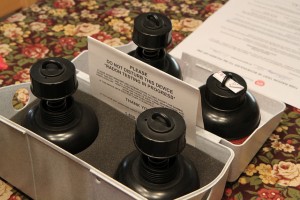During a real estate transaction it’s important to acquire radon test results for the home you’re intending to buy. That said, there are limits to how much you can rely on a test from the seller. This is not necessarily because the seller may be trying to pull a fast one on you, but instead it’s due to limitations with radon testing as a whole.
How Accurate are the Seller’s Radon Test Results?
 With all this in mind, it begs the question when can you rely on a home sellers radon test results? What things should you be aware of when looking at those results, and when is it vital to have the home tested again?
With all this in mind, it begs the question when can you rely on a home sellers radon test results? What things should you be aware of when looking at those results, and when is it vital to have the home tested again?
When Was the Test Conducted?
One of the first – and most important – things you want to look at is when the test was conducted. If the test was performed over a year ago, it’s a good idea to call for a retest. We recommend testing a home twice a year, although the EPA recommends at least once. A test that’s two years old, however is not going to provide an accurate measurement of current radon levels in the home. This is because even during that relatively short amount of time, radon gas can build-up and become dangerous.
For example, let’s say the two year old reading is right at 4.0 pCi/L – the recommended action limit as set by the EPA. While that might have been slightly acceptable two years ago, it’s probably much higher now. Sure, this is good ol’ common sense but it’s still important to note.
Where Was the Test Conducted?
A radon test is supposed to be conducted in the lowest livable space of the home. That means even if your family is going to spend most of their time on the first story, the basement should be tested – if there is one. For those already living in the home, it’s an acceptable practice to test the area where you spend most of your time. During a real estate transaction however, you just want to be sure radon is not dangerous anywhere in the home. That’s why you should always ensure the radon test results have been collected in the lowest livable space.
Has the Home Been Renovated or Changed Since the Test?
If the home has been structurally renovated or updated, or has had any changes to the HVAC system, air sealing, crawlspace or attic, or anywhere that could affect contamination levels – then you need to retest the home. Changes can also affect the radon levels in a residence. Contrary to popular belief more outside air access can sometimes increase radon levels in the home, just as much as it can reduce it. That’s why no matter what’s been changed, it’s a good idea to test again.
Who Conducted the Test?
If a certified radon professional tested the home and the owner has the data to prove it, that’s more than acceptable – provided it’s timely information. If the test was conducted by the homeowner themself, or with a DIY kit then you should order a retest. This is because there are quite a few things that can go wrong while testing a residence, especially if the tester does not follow instructions properly. The only time you should rely on radon test results from a DIY test is when you’ve conducted it yourself and you know for a fact it’s been done properly.
Radon Test Results Are Important Because the Gas is Deadly
Radon is the second leading cause of lung cancer in the United States. It also happens to be responsible for the deaths of more than 20,000 Americans every year. The real problems come from long term exposure, however, which means it can be easily prevented.
The only way to discover whether or not radon is a problem in your residence – or one you’re considering buying – is to test for it. Radon mitigation – the process of removing radon from a home – is not too expensive, but the cost can be factored into a real estate transaction when necessary. This is why it’s a good idea to test a home before you purchase it. You can negotiate help mitigating the problem, or at the very least become aware there is one before you’re in over your head.


